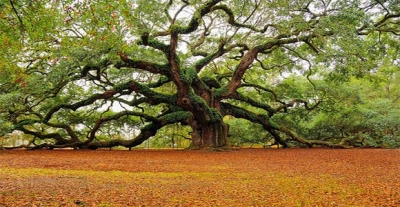
Yew trees are coniferous plants. However, they are a bit different when it comes to their cones. Yews do not have cones; instead, their seeds come in bright, red fleshy cups, known as an aril, which is open at the tip. They look more like berries than cones. But, beware! Most parts of a yew plant are poisonous!
The tree can grow up to twenty metres and live very long. The leaves of the tree are needle-shaped and dark green in colour. An evergreen tree, yews have male and female trees.
Yew trees have been associated with churchyards for a long time. Most graveyards in England have yew trees in them. It is a long held view that the trees were planted during the time of the plague in order to protect and purify the dead. The graveyards were inaccessible to cows, because eating the leaves of yew plants would kill them.
While the trees were symbols of death, they were also hailed as trees of immortality. For many centuries, it was a custom to carry the yew branches on Palm Sunday, and at funerals.
Picture Credit : Google
